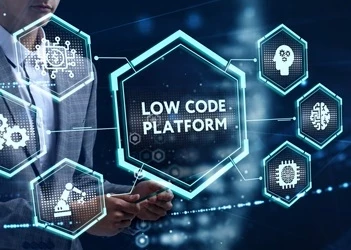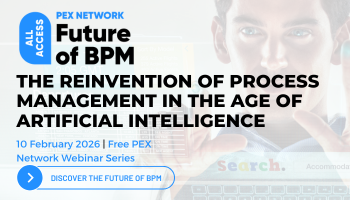Gartner releases Magic Quadrant for low-code application platforms
Low-code technology is breathing new life (and possibilities) into process optimization
Add bookmark
Gartner released a Magic Quadrant report for low-code application platforms (LCAP), evaluating 12 LCAP vendors to help buyers make the best choice for their enterprise needs.
Based on a uniform set of evaluation criteria, the report groups the vendors into the categories of Leaders, Visionaries, Niche Players and Challengers.
Low-code technology is breathing new life (and possibilities) into process optimization. Offering greater flexibility, faster deployment and lower costs, these platforms empower non-technical business users (also known as citizen developers) to build automation solutions, scale effortlessly and future-proof digital transformation.
Join the PEX Network community

Don't miss any news, updates or insider tips from PEX Network by getting them delivered to your inbox. Sign up to our newsletter and join our community of experts.
Learn MoreWhat are low-code application platforms?
Gartner defines enterprise low-code application platforms as software platforms for the accelerated development and maintenance of applications, using model-driven development tools, generative artificial intelligence (AI) and prebuilt component catalogs for the entire application’s technology stack.
Enterprise LCAP features include support for the collaborative development of all application components, runtime environments for high performance, availability and scalability of applications and application deployment and monitoring with detailed usage insights.
“Enterprise LCAPs provide the foundation for developing a wide range of applications and application components with distributed data architectures, including complex multimodal front ends, business workflows, agentic AI and integration capabilities,” Gartner stated.
3 common low-code application platform use cases
According to Gartner, the most popular LCAP use cases include:
- Line-of-business software development for both back- and front-office applications. Enterprise LCAPs can scale from small businesses to global enterprises, handling any use case if business and technology stakeholders formulate requirements that account for the strengths and weaknesses of the low-code/no-code abstractions.
- Modernization and augmentation of legacy business applications. Replacing legacy applications or extending their functionality is usually an expensive, lengthy and risky undertaking. Enterprise LCAPs aim to accelerate the delivery of new implementations, improve cost controls and better mitigate the risks associated with modernization initiatives.
- Development of applications to support internal company processes and digital workplaces. Enterprise LCAPs can also be used outside IT departments with moderate IT supervision and governance to tackle simple and narrow use cases for internal company process automation, reporting, data visualization and simple integration scenarios.
Low-code application platform features
The report lists both the mandatory and common features of LCAPs.
Mandatory features:
- Visual development tools and integrated development environments (IDEs) to support minimal coding or scripting and create applications.
- Data virtualization capabilities to support the creation, maintenance, efficient use and governance of complex distributed data architectures.
- AI-assisted development features that can generate, modify and optimize application components.
- Full self-service capabilities and technical documentation for development, IT operations, security and compliance.
- Extensibility through component catalogs, scripting and traditional code-based software development kits (SDKs).
- Security features to protect the platform and applications built on the platform with identity and access management (IAM).
- An integrated runtime environment for applications created with the platform’s developer tools.
Common features:
- Support for every stage of the software development life cycle.
- A collaborative development environment with versioning and synchronization of changes from multiple developers working in parallel.
- Tools for the creation and maintenance of packaged business capabilities, such as shared business-specific APIs.
- Support for the inclusion of AI-powered functional components in end-user applications.
- An extensible library of connectors for popular application platforms, business applications and database management systems.
- Internal implementation of design systems or integration with external design systems.
- Support for modern architectures like event-driven and streaming architectures, microservices architectures and micro front ends.
Gartner assesses 12 low-code application platform vendors
The 12 LCAP vendors assessed by Gartner are:
- Appian – Leader
- Creatio – Niche Player
- Mendix – Leader
- Microsoft – Leader
- Oracle – Challenger
- OutSystems – Leader
- Pegasystems – Visionary
- Retool – Niche Player
- Salesforce – Leader
- SAP – Visionary
- ServiceNow – Leader
- Zoho – Challenger
All Access: Future of BPM 2026

You asked, and we listened. Business process management (BPM) remains the cornerstone technology for driving organizational transformation, according to the survey results featured in the latest PEX Report. As we look toward 2026 and beyond, generative AI, agentic AI, and intelligent process orchestration are redefining how processes are designed, executed, and optimized. BPM is your key to adapting swiftly and effectively in this new era.
PEX Network is bringing together industry leaders, technology innovators, and thought leaders to answer your biggest questions and explore the advancements reshaping business today. And you're invited. Register for free to save your spot now!
Register Now










